Textiles are everywhere around us, shaping not only what we wear but also the spaces we live in. From fashion garments and upholstery to delicate lace and leather, textiles influence comfort, style, and functionality in countless ways. Understanding the building blocks of textiles—fibers, yarns, fabrics, finishing techniques, and even organic alternatives—can help us make better choices, whether for design, manufacturing, or sustainability. This comprehensive guide dives into the fascinating world of textiles, exploring fibers, yarns, fabrics (woven, knit, and non-woven), leather, lace, fabric finishing, and the growing role of organic textiles. We’ll also provide practical tips for fabric selection and a handy textile dictionary to help you navigate industry terms.
Understanding Fibers and Yarns
At the foundation of every textile are fibers. These fine strands can be grouped into two main categories: natural and synthetic. Natural fibers are derived from plants or animals—cotton is soft, breathable, and absorbent, making it a staple in clothing and home linens; linen, produced from flax, is strong and cool, ideal for summer wear; wool offers warmth and elasticity, perfect for sweaters and tailored suits; and silk, harvested from silkworms, is prized for its luxurious sheen and softness. Synthetic fibers, on the other hand, are man-made through chemical processes. Polyester stands out for being durable and wrinkle-resistant, nylon for its strength and elasticity in activewear, and acrylic for its wool-like softness in knitwear.
Fibers are transformed into yarns through twisting, creating continuous strands used for weaving or knitting. Spun yarns, made from short fibers twisted together, are soft and absorbent, while filament yarns—long, continuous fibers like silk or polyester—produce smoother, shinier fabrics.
Types of Fabrics
Fabrics are generally categorized based on how yarns are assembled: woven, knit, or non-woven. Woven fabrics are created by interlacing vertical (warp) and horizontal (weft) yarns, resulting in strong and stable materials like twill (denim), satin, and canvas. Knit fabrics, on the other hand, are formed by interlooping yarns, giving them stretch and softness. Jersey, rib knit, and interlock are common knit types used for everything from t-shirts to cuffs. Non-woven fabrics differ entirely in construction; instead of weaving or knitting, they are bonded through heat, chemicals, or pressure. These fabrics, such as felt or spunbond, are widely used in disposable products, insulation, or medical applications.
Leather and Lace
Beyond woven and knit fabrics, two special categories stand out: leather and lace. Leather, made from animal hides, is durable, flexible, and has a unique texture. Full-grain leather retains natural imperfections, making it the highest quality; top-grain leather is sanded for a smoother finish, while suede, cut from the underside, is soft and velvety. Lace, on the other hand, is a delicate fabric featuring openwork patterns. Traditionally crafted from cotton, silk, or synthetics, lace is often associated with bridal wear and luxury garments. Styles like Chantilly, with fine floral motifs, or Alençon, with raised designs, remain timeless in fashion.
Fabric Finishing Techniques
Once fabrics are made, finishing techniques enhance their appearance and functionality. Dyeing is one of the most common processes, adding vibrant colors to fibers, yarns, or finished fabrics. Printing adds patterns, with methods ranging from screen printing for bold designs, block printing for artisanal effects, to digital printing for precision and complexity. These techniques not only transform how fabrics look but also expand their applications in fashion and interior design.
Organic Textiles
With sustainability becoming a major priority, organic textiles are gaining attention. These fabrics are produced using fibers grown without synthetic pesticides or fertilizers, reducing environmental harm. Organic cotton, hemp, and Tencel (Lyocell) are popular eco-friendly choices. Organic cotton is soft and sustainable, hemp is strong and requires little water, and Tencel, made from wood pulp, is biodegradable and silky smooth. These alternatives represent the future of ethical and sustainable textile production.
Choosing the Right Fabric
Selecting fabric depends on purpose, climate, and care requirements. For clothing, factors like breathability, stretch, and drape matter—cotton and linen are great for summer, while wool and fleece provide warmth in winter. For home décor, durability is key, making canvas and denim suitable for upholstery. Care instructions also play a role: polyester and cotton blends are low-maintenance and machine washable, while silk or wool may require dry cleaning.
Textiles are far more than just materials—they are the foundation of what we wear, use, and surround ourselves with daily. By understanding fibers, yarns, fabrics, finishing techniques, and organic options, we gain the ability to make smarter, more sustainable choices. Whether you’re a designer, manufacturer, or simply someone interested in the craft of textiles, this knowledge empowers you to appreciate the artistry and science that go into every piece of fabric.



